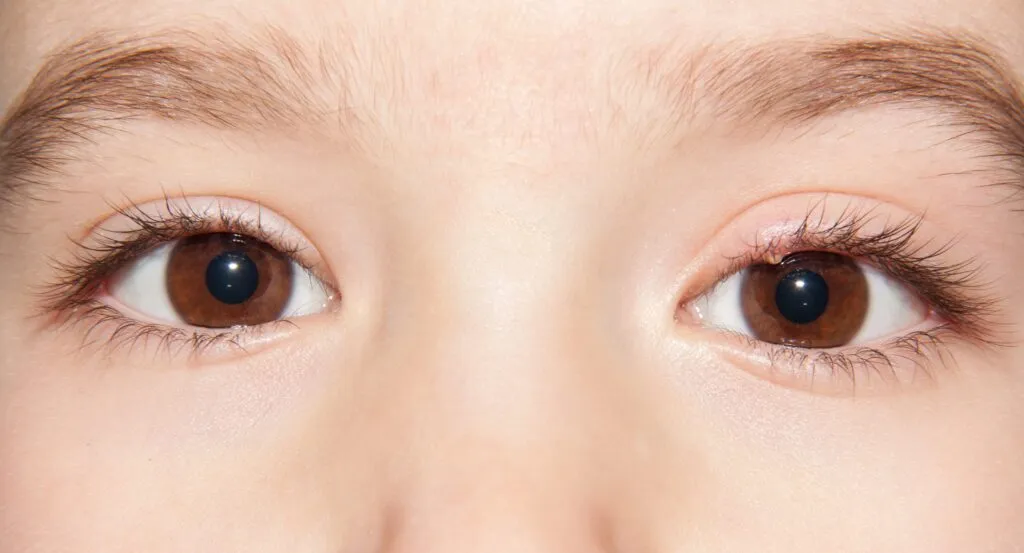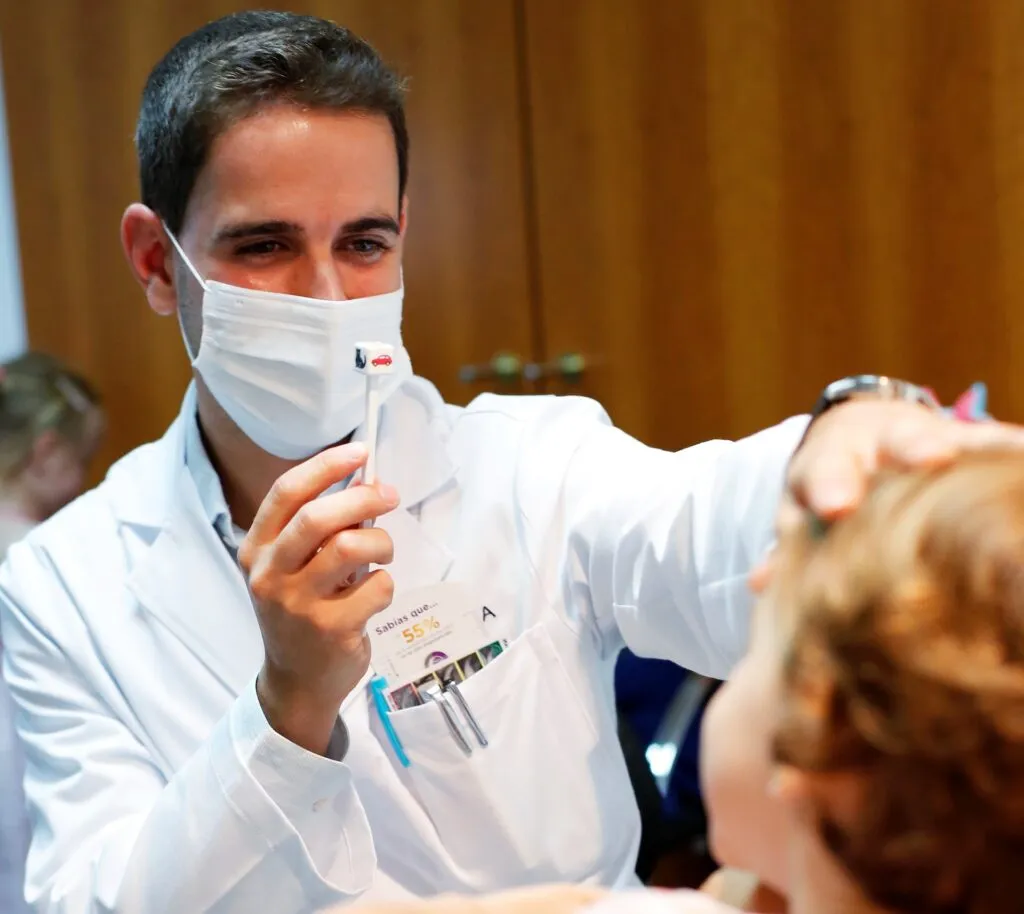
Everything about styes in children
The human body undergoes very significant changes as it fully develops. This sometimes leads to a different condition, depending on the stage of life of the individual. Children, particularly, require analyses and specific studies of certain symptoms due to their increased sensitivity. Furthermore, some types of condition in children, such as the stye, might be a sign of disorders, such as refractive errors. Hence the need, according to the specialists at our clinics, to take the kids to the paediatric ophthalmologist whenever this inflammation appears.
What are styes?
Styes are acute inflammations of the edge of the eyelid which look like red bumps. As well as their appearance, they cause sensitivity and pain, making them a very uncomfortable condition. In general, styes are not excessively serious, but, as indicated above, in children they might be a sign of a refractive error that affects their eyesight and, therefore, they must be taken into account and a specialist seen for advanced medical care.
Possible causes of styes in children
According to Dr Marina Rodríguez Tirado, a Miranza specialist, “the main cause of styes is that the glands located inside the eyelid produce dense fat instead of very watery fat that cannot be released through the edge of the eyelid and remains inside”, thus favouring infection from the Staphylococcus aureus bacteria. This is the case for both adults and children, who are more exposed to these bacteria from contaminated surfaces, such as toys or the floor.
Styes, therefore, are due to a dual event: obstruction of the sebaceous glands and infection. The former appears more frequently when excess sebum is produced or due to poor ocular hygiene. The latter when the eyes are touched inappropriately, which includes rubbing them with dirty hands, sharing personal items or when a weak immune system makes children more prone to infection.
Symptoms of styes in children
The symptoms of styes in children are similar to those presenting in adults: a red lump on the eyelid, sensitivity and pain when touched, redness, swelling that makes the eye look smaller than normal, excessive tears caused by the irritation from the stye and a foreign body sensation, which makes some children feel like they have something in their eye. In general, the condition is very easy for parents to identify externally.
How are styes in children treated?
Styes normally disappear naturally in around one to two weeks. However, there are treatments for faster recovery or that can prevent the stye from leading to complications, resulting in more serious problems. These are some of the most frequent:
Warm compresses
Applying warm compresses to the stye can relieve the pain, decrease the inflammation and promote recovery. This should be done for around ten minutes several times a day, making sure the compresses are completely clean.
Creams for paediatric styes
Ophthalmologists sometimes recommend antibiotic creams to treat the infection and speed up healing. These should not be used without a prescription, and the instructions regarding frequency and amount must always be followed.
Surgical removal
As indicated above, styes often disappear by themselves after a few days, and both warm compresses and antibiotic creams or eyedrops are designed to relieve the discomfort or prevent the stye from getting worse. In some cases, however, when the stye seems to become chronic, a simple surgery might be required to remove it.

Possible complications of paediatric styes
Although most styes do not lead to more serious conditions, some might result in advanced complications, such as the spread of the infection to other areas of the eyelid, their recurring appearance, the formation of a chalazion as a result of chronic inflammation of the sebaceous glands of the eyelid, or other more significant ones, such as conjunctivitis, keratitis or orbital cellulitis. Sufficient reasons to exercise extreme care.
Prevention of styes in children
Reducing the risk factors of styes can limit their appearance. This means teaching children not to touch their eyes with dirty hands, to always wash them whenever possible and reasonable, to not share personal items, such as towels or pillows, to ensure correct eye and eyelid hygiene, and to eat a balanced diet to keep the immune system strong. It is also important to promote rest in children to fight stress, which increases the likelihood of infections.
Are styes in children contagious?
In a previous section, we saw how styes are due to the obstructed sebaceous glands of the eyelid and to infection from the Staphylococcus aureus bacteria. Both conditions must occur. The former cannot be caught. However, bacteria can be spread from sharing items that are in contact with the eyes. Therefore, styes in children are contagious to a certain point, as the bacteria can be spread and affect children who already have gland obstruction problems.
When should I see a specialist if my child has a stye?
Doctor Marina Rodríguez Tirado once again explains that it is wise “to see the doctor whenever there is a stye, primarily because it could be the start of a gland dysfunction and lead to dry eye in the future”. This is particularly important in the case of children, where styes are sometimes signs of refractive errors. Our expert explains: “For example, when a child has to make an effort to change how they open their eyelid in order to see better means that the fat is being squeezed more than necessary and it accumulates. This is when styes occur.” If your child has one, come to our clinics so that we can study their eye and eyesight health.